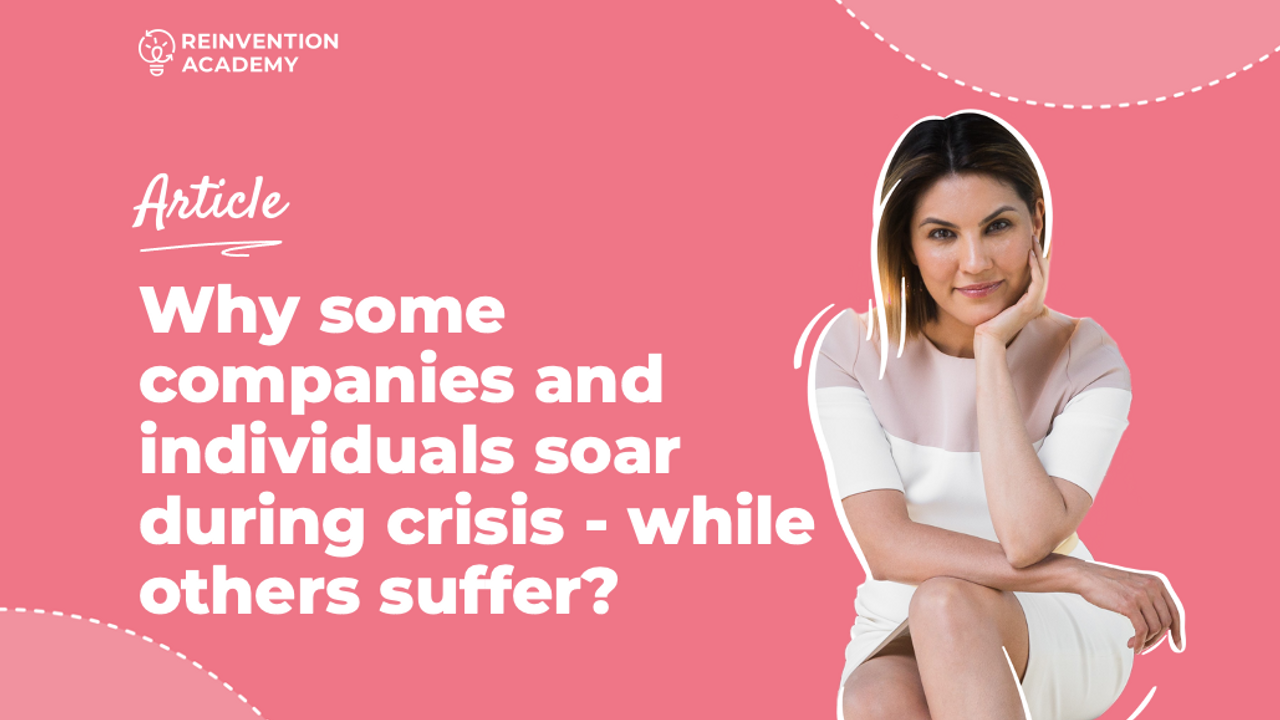Why some companies and individuals soar during crisis - while others suffer?

I live for a good "underdog" reinvention story, and the story of Miro is definitely one of those.
On January 11, 2020, Chinese media reported the first novel coronavirus death, a sixty-one-year-old man. In the months that followed, the world suffered millions of infections and mourned hundreds of thousands of deaths from what became known as COVID-19.
Suffering struck many organizations, communities, and livelihoods as well. In the United States alone, 30 million people filed for unemployment by May 2020. Century-old companies, passed down for generations, disappeared seemingly overnight. Entire careers vanished.
Yet, as in every global upheaval before, the suffering went hand in hand with courage. Medical professionals worked unimaginable miracles to save the infected. Grocery workers packed food for all to eat. Bus drivers continued to connect the communities. Businesses took on the chaos and fought to make lives a little bit easier or a lot.
Before COVID-19 put much of the world on lockdown, Miro was a nine-year-old company with 280 employees and a respectable following of 3.5 million users. Designed to deliver a collaborative virtual experience for a team of people working on a digital whiteboard, Miro’s flexible solution mimics the experience of sitting together for a brainstorming session even if team members are dispersed around the world, sitting on their own couches in sweats.
Like many other virtual collaboration providers, Miro recognized and embraced the growing trend of teams needing to work together while separated in space and time. Most solution providers, however, made their bets on offering a simple but relatively rigid structure, still requiring more sophisticated and unstructured collaborations to be done in person. Miro went a different way, offering extreme freedom and flexibility of use, allowing for infinite ways to use the virtual board (digital “sticky” notes included).
As the virus forced people to stay indoors and away from their offices, Miro grew its base to five million users and 21,000 paying customers, including such household names as Dell, Salesforce, PwC, Electronic Arts, Verizon, and Deloitte. Educators and non-profit leaders joined in as well. Because of Miro, critical solutions were developed, deep insights were secured, jobs were saved, learning opportunities were protected, and projects got lifted off the ground, shutdown be damned.
How did they do it?
Why are some companies and individuals able to soar during crisis - while others suffer?
What can we learn from this story to prepare ourselves for the next disruption - which is clearly just around the corner?
I hope my "Editors Choice" article for The European Financial Review can help you answer some of these questions.
Let me know what reinvention stories are inspiring you today.
————
Dr. Nadya Zhexembayeva helps companies such as Coca-Cola, Kohler, and IBM turn change and disruption into an opportunity.
Want to join our amazing reinvention community? Grab this FREE 85-page preview of my new book and you are in: https://www.learn2reinvent.com/handbook
And don't forget to join our community on Facebook. See you there!


